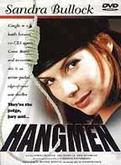 This is an over-all enjoyable book. I struggled a bit in the beginning with the alphabet soup of acronyms. Thankfully there is a glossary in the back. This is a military espionage book which is different from a general espionage work in that it assumes a certain level of knowledge or at least familiarity with the military in general. When one is writing this type of work there is simply no way to avoid jargon and acronyms. That would be like picking up an advanced level computer programming book expecting not to find “all those computer terms” inside.
This is an over-all enjoyable book. I struggled a bit in the beginning with the alphabet soup of acronyms. Thankfully there is a glossary in the back. This is a military espionage book which is different from a general espionage work in that it assumes a certain level of knowledge or at least familiarity with the military in general. When one is writing this type of work there is simply no way to avoid jargon and acronyms. That would be like picking up an advanced level computer programming book expecting not to find “all those computer terms” inside.
I actually had to wait to review this book. I loaned it to my father, who had been in the Navy and doesn’t read a lot of books while he was recovering from surgery. He really liked it. Enough to read twice before moving on to another book.
What I find quite surprising about this book is the lack of chatter one hears or sees about it. This book is a tail about STUXNET. Yes, you’ve all heard that term. The virus which was introduced to the Iranian nuclear program and royally hosed their centrifuges then got discovered out in the wild. While I’m sure the author had to dance around what could and could not be included in such a work of fiction, there is enough solid writing and details to give the book significant street cred.
Honestly, if the cover did not have the word espionage on it, I would have been quite a bit farther into the book before I figured out what was going on. The infiltration is so deftly handled I would not have noticed its beginnings without the heads up on the cover. The turning of the asset doesn’t involve the usual tropes of gambling, drugs, or sex. In fact, the book is free of such things and still very interesting. I don’t even recall any language above PG-13 in the work. It would make a very good read for the slightly older YA market of high school students contemplating a tour of duty in the military. The book shows a side of the military not often portrayed in popular works. One very few people know anything about.
Having read “Tinker, Taylor, Soldier, Spy” and watched quite a few shows based on “Smiley’s People” I couldn’t help but ponder just how much the game has changed, yet remained the same. Current news is flooded with stories about clandestine hacks of businesses and government agencies, but when it comes to the real stories, the serious achievements, the news says little. Much of the world believes the spy game is all about hacking into systems connected to the Internet from dark rooms in obscure places. The real achievement and the interesting stories come from making the impossible a done thing.
STUXNET was installed on a closed network. A high security facility without any Internet connection at all. It involved a blend of “Smiley’s People” and modern spycraft to pull it off.
I do hope this author abandons his publisher and continues to write, putting books out on his own free of publisher meddling. Being an author myself, the only nits I had to pick were things I noticed which were obviously the fault of the publisher. Putting that statement in perspective, it is much like when actors say they don’t watch movies or own a television. They get too involved analyzing the craft to enjoy the finished product. About halfway through this book that craft side of me shut down and the story had its hold on me.
This is a good book for a single sitting read. Something to pick up for when you have that rainy Sunday with nothing planned and nobody around to distract you.
Perhaps we will be lucky enough for this author to write a story about that virus recently discovered which infects the firmware of hard drives all over the world. That would make for a very interesting story if done at the same level as this work.



